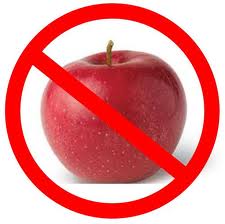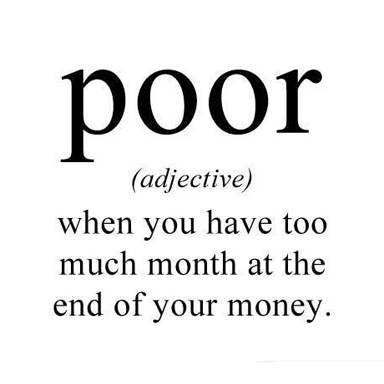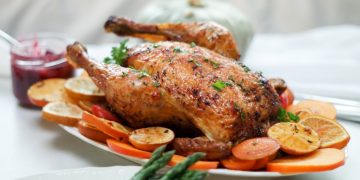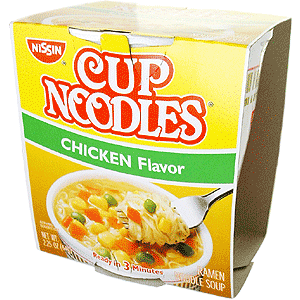This is a guest post by Forest from Frugal Zeitgeist. Forest has been eating on a budget for some time now and has learned to cook over years of trial and error.
Sandy recently posted about the SNAP Challenge that has been laid down by The Food Bank of New York. New York is not a cheap place to live but for 1.8 million of it’s residents Food Stamps are a real life-line. The challenge to live like this, on just $1.48 per meal, for a week has seen celebrities such as chef Mario Batali join to rally for awareness.
A week is tough and highlights some of the problems faced by low-income families and individuals surviving with food stamp assistance. Many participants will be able to take a deep breath at the end of the week and say “phew that was tough” before running to the nearest Starbucks and buying some kind of $5 jug of flavored coffee before resuming life as it was before.
However it won’t change anything and people on assistance and those who don’t earn a whole lot (but are not eligible) still need to keep living cheap in the long term. With $1 menus in nearly every fast food restaurant, allowing you a quick meal for little effort, it is no wonder many people live day to day like this,despite the long term negative health effects.
So how does one even start to go about living closer to the $1.48 per meal goal and still provide the body with the nutrients it requires?
I’m 30 years old. I grew up in the UK but I think I share many similarities with Americans of my generation. I grew up in a fairly poor household where my parents fed us on cheap convenient food. Some good, much of it bad. Frozen crispy pancakes, lots of potato products and cheap reconstituted meats. Fast food wasn’t quite so affordable back in the 80s but it is now. Many of my generation are feeding themselves and their children with a toxic mixture of over produced foods and fast food in order to live within a certain budget.
I had to learn to cook as a young adult and I learned to do it on the cheap because quite frankly I wasn’t earning much money at the time. Cooking is the answer to the problem but of course it’s something that takes time and does involve a few initial outlays.
When you cook at home you can see what you are putting in your body and choose your ingredients more wisely. The perfect meal needs protein, carbohydrates and some fats along with a selection of vitamins and minerals. Although hard on a budget it is much more achievable by cooking your own food than buying a meal deal. Beans and rice (and other starches), steamed veggies and a small amount of dairy can give you most of what you need to stay healthy and feel good.
As Sandy mentioned in an email to me when I proposed this post “it helps to be vegetarian”, which I am and have been for over 10 years. Good quality healthy meat is expensive and very nutritious but out of the budget of people trying to live closer to SNAP. Meat consumption is arguably way to high anyway (some meats have been linked to cancers) so reducing it to once or twice a week surely can do no harm. If you are eating meats fish and chicken are probably your healthiest bet. Oils in fish are extremely healthy and hard to get on a purely vegetarian diet (I supplement with flax oil).
Basic ingredients to always have on hand
These are the basic and affordable ingredients I try to keep around and that can be used to create a few different meal types.
- Canned or fresh tomatoes (whatever is cheapest at the time)
- Beans and lentils, pinto beans contain full protein so are a good one to have around
- Brown rice
- Wholemeal pasta
- Wholemeal flour
- Baking powder
- Onions
- Green Veggies
- Garlic, ideally fresh but dried if cheaper
- Cumin
- Cilantro
- Basil
- Salt
- Black pepper
- Olive or canola oil
Where to shop?
Shopping is often easiest to do wherever is convenient. Time is always something that we all feel we need more of so the Bodega can easily become our regular food stop. However creating a shopping route and using a few places to buy in bulk is going to work out best. It may be that you find a loose bulk spice and bean shop to go to once every 3 weeks and then buy your canned goods from a warehouse style (Trader Joe’s, Costco) type place once a month. Obviously if you really are living on Food Stamps these bulk shops can’t be done so easy so you’ll have to try and buy from the loose spice shop and Costco type places in smaller bulk until you can start pushing a little money aside to boost up how much you buy per visit.
Vegetables are difficult but you’ll be best to shop in season. I have always found the best deals at small market stalls and dedicated veggies shops. New York’s neighborhoods are full of them and I assume most other cities too. In rural areas there are likely farms selling direct and maybe even a few honesty boxes around. Learning to go without certain veggies at certain times of the year will greatly reduce your food bills. I have not had a red pepper for quite a few weeks now but beets and squash is available at extremely cheap prices here in Auckland so i’m enjoying those.
When buying canned or processed items always read the label. Try to get products with as few ingredients as possible and if a fresh alternate is available at a similar price always go that route. For example not all canned tomatoes are equal and it helps to look for cans with a higher percentage of tomato and less juice and additives. Always try to avoid items with added sugar.
If you can walk and just use a backpack you’ll obviously spend nothing on travel. However planning a route that you can take one bus or train home would likely be cheaper than driving. If you have a friend who is doing a similar shop then carpooling will cut down on gas.
A few simple staples
Tomato sauce
Tomato sauce is versatile, cheap and easy to make and can be used as a base for chilli, curry, stew and a number of other dishes.
- Cut an onion and a few cloves of garlic into small pieces
- Medium heat a pan with a little oil (olive oil or canola are good)
- Add the onions and garlic, lightly fry for a few minutes
- Add 4 cans or equivalent of fresh chopped tomatoes, mix and turn down to simmer
- Add a little salt, pepper and a dash of vinegar
- Continue to simmer, stirring occasionally, for about an hour. Add a little water if needed to stop it sticking or getting too thick
Flavored with cumin you have Indian curry or chilli style sauce for use over rice. Flavored with basil it is Italian style and can used over pasta or cooked down further as pizza sauce. I try to cook a basic sauce and keep it frozen or in the fridge to use over multiple meals.
Here you’ll find a video of my basic tomato sauce recipe.
The sauce tastes great blended as smooth sauce or left chunky.
Bread wraps
The most basic bread can be made by mixing flour and water and then heating. If on an extreme budget this can be done to create some kind of cheap food but for a little more work you can create tasty wraps that will cost a fraction of store purchased tortillas.
- Mix 4 cups flour (ideally at least half wholemeal but more is healthier), a pinch of salt, a teaspoon of baking powder in a mixing bowl
- Add a tablespoon of oil
- Slowly pour in room temperature water and mix with your hands or a wooden spoon until you start to get a sticking dough
- Turn out onto a hard floured surface and knead the dough until it forms a smooth ball, about 8-10 mins.
- Lightly cover with oil, return to the mixing bowl, cover with a warm damp tea towel (not touching the dough) and leave to sit for 30 mins.
- Break into small golf ball sized balls and knead each one for a minute or so until each is smooth again (floured hands and surface help here).
- Let sit for 10 mins, covered again.
- Each ball can be rolled thinly for a large thin tortilla flat bread or left smaller but thicker for smaller thicker breads.
- Heat a pan to high heat and cover lightly with oil, cook your tortilla for 30 seconds – 1 minute on each side and put onto a plate.
- Eat immediately or cover to try and stop them going hard.
Here you can find my recipe for Wholemeal Curry Tortilla, including a snazzy video!
The dough balls can be frozen and thawed in the fridge for later use. Cooking these and eating them right away is best as lack of preservatives means that can harden quickly. For lunch wraps I make them thin, make my wrap (salad, cottage cheese, beans) right away and wrap in saran wrap, these seems to help them stay soft.
Tip: Cook a wrap, add a layer of tomato sauce, some cottage cheese (recipe below) and a few veggies and throw under the broiler for a quick and healthy pizza. You’ll also need some protein though so a few mushrooms or a side of beans could fill that need.
Refried beans
Refried beans can be used at any meal and are a high source of protein. I often use Pinto beans but pretty much any bean works in this recipe. Dried beans will always be a lot cheaper than canned so I always advise this. It isn’t much more work.
- Soak and cook your beans
- Finely chop an onion and a few cloves of garlic
- Medium heat a pan and add the onions and garlic, fry for a few mins
- Throw in your beans, about 3-4 cups worth works well.
- Stir for a minute or so and then fill the pan half with water
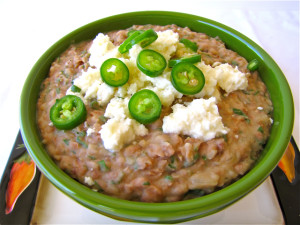
- Turn down the heat to simmer, add a tablespoon of cumin, salt and pepper to taste and a teaspoon of cilantro
- Simmer, stirring regularly for 30 mins up to a few hours, add water a little at a time if necessary
- They are ready to eat chunky but can be crushed with a potato masher or put in a blender to make smooth
These can be frozen or refrigerated for about 3-4 days.
Cottage cheese
Cottage cheese can be purchased cheap but can be made a lot cheaper and is an affordable way to have a cheap and healthier cheese on hand. It can be used in place of mozzarella on pizza, alongside eggs at breakfast, in sandwiches, on chili and just about anywhere. Here is a simple recipe.
- Pour half gallon of milk (or whatever quantity you want) into a deep pan.
- Heat on medium, keep a close eye on it
- Just before it starts to boil, take it off the heat and let sit
- When cooled (about 10-15 mins) very slowly pour some white vinegar in whilst stirring, when you see a split of curds (lumps of white cheese) and whey (an almost clear liquid) you can stop.
- Using a fine sieve over a bowl pour the curds and whey through
- Put the curds in a container, top up with whey until it is covering over the whey.
- Add with salt and pepper to taste and allow to cool, then refrigerate overnight.
Hummus
As a snack with carrots and celery hummus is great to have on hand. It can be really pricey to buy in store. The biggest ingredient is blended chickpeas so the most basic recipe can be just that with a little salt, pepper and lemon juice. Here is a slightly better recipe (I never use measurements, each batch comes out slightly different).
- Soak and cook a few cups of chickpeas (lentils and other beans work well with this recipe too)
- In a blender add a few cloves of chopped garlic (cooked lightly if the taste will be too strong for you) and start to lightly blend throwing in a handful of chickpeas at a time
- When the blender is about half full add a tablespoon of tahini (often available cheap from Middle Eastern style shops)
- Add half a lemons juice and a pinch of salt
- Taste and adjust as necessary. More tahini will give it a nuttier taste, more lemon a zingier taste.
Why all the wholemeal, isn’t that expensive?
You can get white flour, rice and pasta all for cheaper than their wholemeal counterparts but no brown basically means no fibre and more processing. The extra cost is well worthwhile to your health as fibre will help keep your digestive track in line and more evidence shows it is integral to allowing your body to efficiently process sugars and regulate your weight. Buy brown whenever you can afford it.
Closing thoughts
You may not need to live cheaper, you may be happy grabbing a $4 bagel for breakfast with a $3 coffee. A $7 sandwich for lunch and $15 dinner after work. If you do live like this then you are literally pouring your money down the drain and not having any control over what goes into your body. Cooking can become a very fulfilling hobby and once you get used to planning it into a day the prep time is far less than waiting time. Beans can be soaked overnight, sauces simmered whilst you watch a movie and adjusting to cooking in larger and larger bulk will mean you have yummy nutritious food on hand faster than you run round to Subway.
For those who need to make lifestyle adjustments to live cheaper the biggest obstacle could be the time. You may be working two jobs and bringing up a family of little critters. Again it all comes down to the planning and if you can drag a partner or even friends into help you’ll be able to make a schedule that works. Small steps such as making wraps one week and bulk sauce the next will slowly stock your fridge and freezer with more food allowing you to cut back dependence on the dollar menus or the frozen pizzas. In some cases processed and fast food will still be cheaper but at what cost to your health?
I hope you enjoyed and found this post helpful. I believe we can all be healthier in our eating and all can enjoy cooking as a hobby allowing us to ultimately spend less and save more.
Thanks for reading and thanks to Sandy for the opportunity to post.
Forest.




